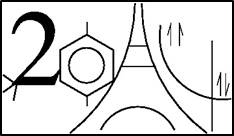Zirconia (ZrO2) is one of the most studied ceramic materials, because of the wide range of its technological applications, including Solid Oxide Fuel Cells (SOFCs). Indeed, yttria (Y2O3) stabilized zirconia (YSZ) is the most used electrolyte in high-temperature SOFC. Composite electrolytes, constituted by molten carbonates associated to an oxide like YSZ, have also been recently proposed as promising electrolyte for low-temperature SOFC.
Despite its intrinsic interest, few papers have been devoted to the theoretical study of zirconia, an important step toward the understanding of its peculiar properties. Periodic DFT calculations have been performed on the bulk structures of the three ambient pressure polymorphs of zirconia, the monoclinic, tetragonal and cubic phases. The performance of different Gaussian-type functions basis sets and various exchange-correlation functionals (with particular interest in hybrid functionals) in predicting structural and electronic bulk properties have been analysed in detail, in order to select a reliable protocol, which ensures accuracy of results and low computational cost.
The selected protocol has then been further tested, studying the properties of the most stable clean surfaces for each of the three allotropes (cubic (111), tetragonal (101) and (111), and monoclinic (-111)).
Finally, it has been used to investigate the doping of zirconia with Y2O3, where for each pair of Y3+ cations that substitutes a pair of Zr4+ ions, one oxygen vacancy is created. Therefore, the formation of different types of oxygen vacancies on the most stable surface (cubic (111)) has been first examined. Subsequently, the possible positions for the Y doping atoms with respect to these vacancies have been systematically examined, with particular interest in the stability and geometrical and electronic properties of the considered configurations.
The obtained results showed that the proposed protocol, based on hybrid DFT approach, is been found suitable to accurately describe the basic components of SOFCs.

 PDF version
PDF version
